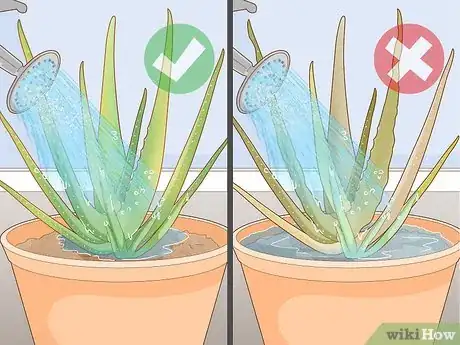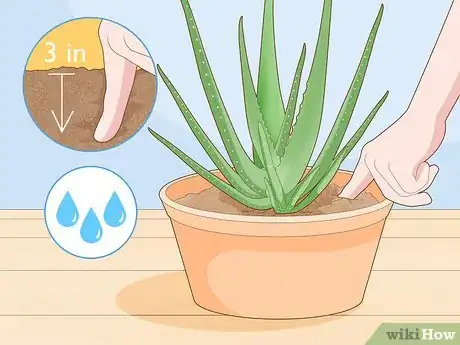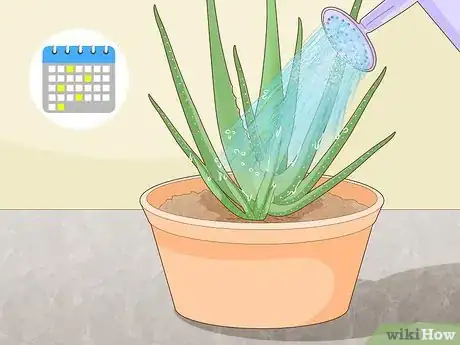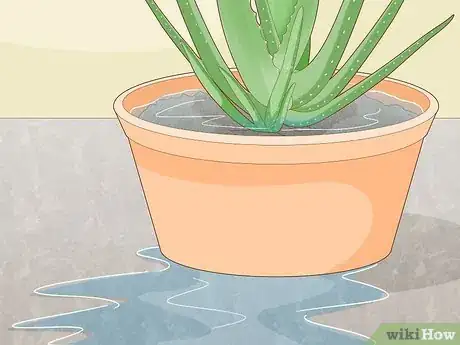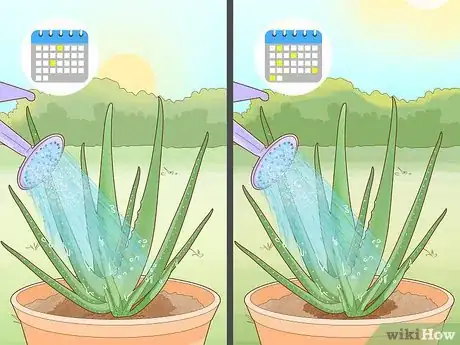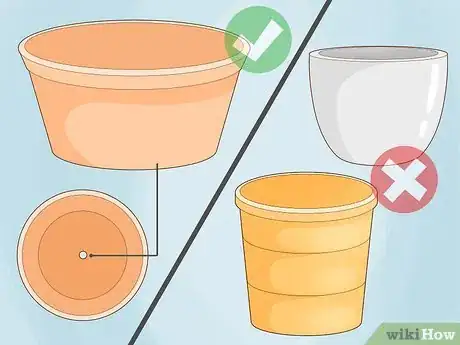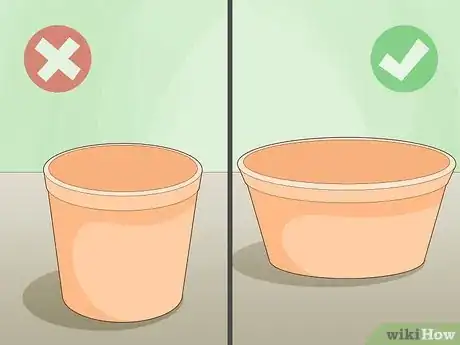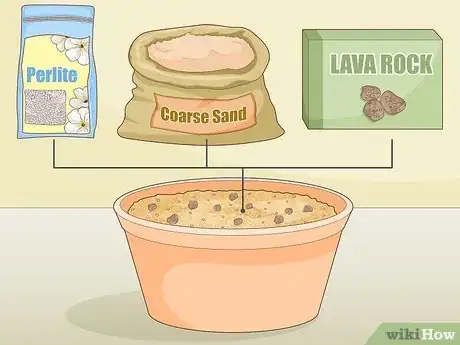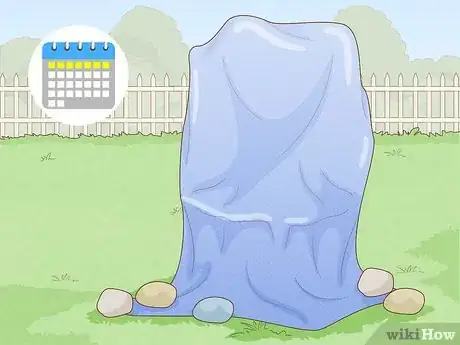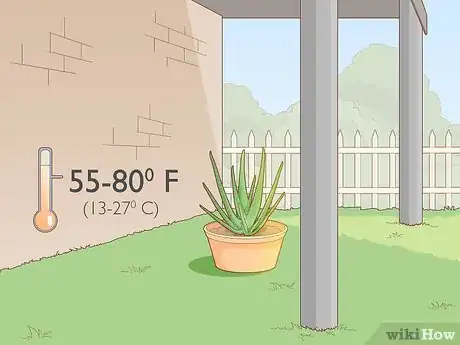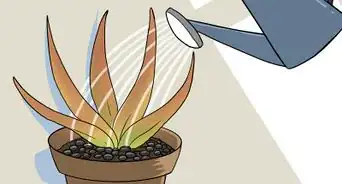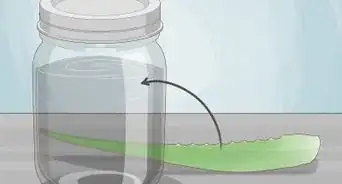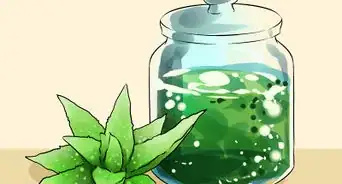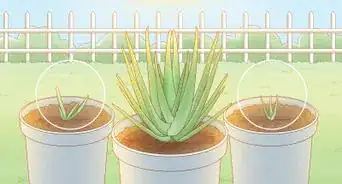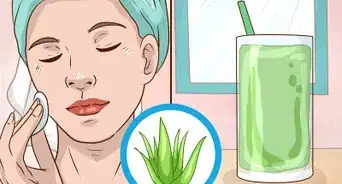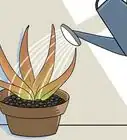This article was co-authored by Melinda Meservy. Melinda Meservy is a Plant Specialist and the Owner of Thyme and Place, a botanical boutique offering plants and gifts in Salt Lake City, Utah. Before starting her own business, Melinda worked in process and business improvement and data analytics. Melinda earned a BA in History from the University of Utah, is trained in lean and agile methodologies, and completed her Certified Professional Facilitator certification. Thyme and Place offers indoor plants and containers, a fully stocked potting bench, and tips on plants to suit your space and lifestyle.
There are 10 references cited in this article, which can be found at the bottom of the page.
This article has been viewed 26,176 times.
Why is your aloe vera plant turning brown? Too much water and light are the two most common causes of brown leaves. The soil and choice of pot can also affect the moisture of the plant and make a big difference in keeping it green and healthy. Read on for tips to identify and fix the reasons behind your plant's discoloration.
Steps
Fixing Watering Issues
-
1Examine the leaves to identify whether the plant needs more or less water. Aloe vera leaves are supposed to be green and chubby. If the leaves are puckered and brown around the edges, the plant needs more water. If the leaves are brown and wilted and have soft spots, the plant has been overwatered.[1]
- Puckered, dehydrated leaves are less sturdy than healthy ones so they tend to flop downwards and the sides may curl inward toward each other.
- Lightly squeeze the leaves to feel for bruises. If you notice any soft, cushy spots and brown wrinkled edges, the plant has too much water.
- Don’t worry if you’ve overwatered your aloe vera plant because it can bounce back!
-
2Check the soil for moisture before you water the plant. Aloe vera plants are used to desert climates with very little water, so it’s important to check the soil for dryness before you water it.[2] To check, stick your thumb or finger about 3 inches (7.6 cm) down into the soil to feel for moisture. If it’s bone dry, give the plant enough water so that the top 1 inch (2.5 cm) of soil is wet.[3]
- If you feel any dampness around the tip of your finger, wait 1 or 2 days before checking it again and (if it’s dry), watering the plant.
- Aloe vera plants store water in their leaves, not in the soil. So even if the soil is dry, the plant could be perfectly happy and not need more water.
Advertisement -
3Water your aloe vera plant only once per week. Aloe vera doesn’t need much attention, so waiting 7 days between waterings is usually a good rule of thumb. If it’s been 7 days and you’re not sure, stick your finger into the soil to check for moisture. If the soil is damp, don’t water it for another day or 2.[4] If it’s sopping wet, leave it alone for 5 to 7 days before you check the soil again and, if necessary, water it.[5]
- If your aloe vera plant is outside, make a note of when it rains so you don’t accidentally overwater it.
- The key is to let the top 2 inches (5.1 cm) to 3 inches (7.6 cm) of soil dry out before watering the plant.
-
4Make sure water can flow out of the drainage hole. The drainage hole in the base of the planter allows water to flow out of the soil, giving the plant’s roots some necessary breathing room.[6] If you don’t see any water coming out after you water the plant, make sure nothing is blocking the drainage hole.[7]
- If you have a large, heavy planter, carefully tilt it so you can reach under it and use your pinky finger or a stick to dislodge anything that might be clogging the hole.
-
5Adjust your watering schedule during the winter the summer seasons. Aloe vera plants are “dormant” during the winter, meaning they aren’t growing and, as a result, don’t need much energy. For that reason, only water the plant once every 2 weeks in the winter. During mild summers, water the plant once per week.[8]
- If you’re not sure, test the soil with your finger before deciding to water it or let it be.
- During hot summers where the temperature goes above 80°F (27°C), check the soil and water the plant more often (every 5 or 6 days) if it feels dry.
Using the Right Pot and Soil
-
1Choose a terra-cotta planter with a drainage hole. A porous material like terra-cotta will help soak up water and aerate the roots between waterings. A drainage hole is key to help water flow out of the soil, preventing root rot and browning leaves from too much moisture. Be sure to check that the drainage hole isn’t plugged up with dirt, pebbles, or other obstacles.[9]
- Clay and timber planters will also give the roots the perfect amount of air circulation.
- Avoid using a ceramic or plastic planter because these won’t aerate the soil at all, causing the soil to stay too moist between waterings. However, if you live in a place with hot summers and low humidity, you can get away with using a plastic pot because the hot, dry air can leech excess moisture out of the soil.
- Properly aerated soil will also protect the plant from diseases and pests, keeping it healthy and green.[10]
- You don’t need to use gravel or clay balls at the base of the planter—the drainage hole will do the trick!
-
2Select a planter that’s wider than it is deep. The roots of aloe vera grow horizontally, not vertically, so a wider pot is a better home for your plant. Aloe vera plants prefer a tight fit, so choose a pot that’s small enough that the roots take up about 2/3 of the pot.[11]
- If the pot is too deep, the roots won’t reach the bottom and it will be all soil, causing water to pool at the base (the perfect conditions for root rot!).
- Don’t worry about overcrowding the roots—a snug fit means there will be less soil in the pot, preventing excess moisture from sticking around between waterings.
-
3Fill the planter with a potting mix made for cacti and succulents. A well-draining potting mix is crucial to keeping the moisture level just right for your aloe vera plant. Check the package to ensure the mix contains either perlite, lava rock, coarse sand, or blend of these breathable ingredients.[12]
- Don’t use regular soil, it doesn’t breathe as much and may lead to root rot (and, in turn, more brown leaves).
- Lava rock absorbs heat during the day and releases it at night, keeping your aloe vera plant at the perfect temperature on mild, cool nights.
- Perlite lightens the soil and prevents too much moisture hanging around the roots.
- Coarse sand allows water to flow down through the soil and out of the pot so there isn’t too much moisture hanging around the root system.
Providing Ideal Light and Temperature
-
1Move your indoor potted plant out of direct sunlight, if necessary. If you see any brown spots (or sunspots) on the aloe vera leaves, they might be caused by sunburn. For an easy fix, move the plant to a place that only gets indirect sunlight. Move it to a spot away from any windows for 4 to 7 days or until the brown spots are gone.[13]
- The glass can intensify the sunlight and cause the leaves to get sunburned, especially from the afternoon sun coming in from the west.[14]
- Other signs of a sunburned plant include faded leaves (pale, not bright green), and browning or reddening of the leaf tips.
- Avoid placing your plant next to a lamp because even the heat from the bulb can burn its leaves.
-
2Shield your outdoor aloe vera plant during the hottest, brightest hours. Aloe vera plants love sunlight, but too much of it can burn the leaves and cause browning. If your aloe vera plant is in the ground, cover it with a lightweight tarp or awning during the hottest, brightest hours of the day (2 to 3 hours of morning sunlight is sufficient).[15]
- Shade the plant from direct sunlight for 4 to 7 days or until the brown spots go away.
-
3Keep your aloe vera plant in an environment that’s 55°F to 80°F (13°C to 27°C). Any sudden temperature changes can stress out your plant, causing the leaves to brown. If you live in a place that gets extremely hot during the day, bring the plant inside. If you live in an area with cold winters, bring your aloe vera plant inside before the fall frost so it doesn’t get too chilly.[16]
- If your potted aloe vera plant is outside during summer heat, move it to a semi-shaded area that only gets 2 to 3 hours of morning sunlight. If it’s rooted in the ground, consider setting up a protective tarp so it gets some shade.
- To keep your outdoor aloe vera plant warm in the winter, drive some stakes in the ground around the plant and drape a blanket over it to retain heat. Place rocks around the edges of the blanket so it doesn’t blow away from harsh winter winds.
Expert Q&A
-
QuestionWhy do plant leaves turn brown?
 Melinda MeservyMelinda Meservy is a Plant Specialist and the Owner of Thyme and Place, a botanical boutique offering plants and gifts in Salt Lake City, Utah. Before starting her own business, Melinda worked in process and business improvement and data analytics. Melinda earned a BA in History from the University of Utah, is trained in lean and agile methodologies, and completed her Certified Professional Facilitator certification. Thyme and Place offers indoor plants and containers, a fully stocked potting bench, and tips on plants to suit your space and lifestyle.
Melinda MeservyMelinda Meservy is a Plant Specialist and the Owner of Thyme and Place, a botanical boutique offering plants and gifts in Salt Lake City, Utah. Before starting her own business, Melinda worked in process and business improvement and data analytics. Melinda earned a BA in History from the University of Utah, is trained in lean and agile methodologies, and completed her Certified Professional Facilitator certification. Thyme and Place offers indoor plants and containers, a fully stocked potting bench, and tips on plants to suit your space and lifestyle.
Plant Specialist It's typically one of three things. It could be the natural life cycle of the plant, it could be overwatering, or it could be underwatering.
It's typically one of three things. It could be the natural life cycle of the plant, it could be overwatering, or it could be underwatering. -
QuestionHow can I tell if my aloe vera has too much or not enough water?
 Melinda MeservyMelinda Meservy is a Plant Specialist and the Owner of Thyme and Place, a botanical boutique offering plants and gifts in Salt Lake City, Utah. Before starting her own business, Melinda worked in process and business improvement and data analytics. Melinda earned a BA in History from the University of Utah, is trained in lean and agile methodologies, and completed her Certified Professional Facilitator certification. Thyme and Place offers indoor plants and containers, a fully stocked potting bench, and tips on plants to suit your space and lifestyle.
Melinda MeservyMelinda Meservy is a Plant Specialist and the Owner of Thyme and Place, a botanical boutique offering plants and gifts in Salt Lake City, Utah. Before starting her own business, Melinda worked in process and business improvement and data analytics. Melinda earned a BA in History from the University of Utah, is trained in lean and agile methodologies, and completed her Certified Professional Facilitator certification. Thyme and Place offers indoor plants and containers, a fully stocked potting bench, and tips on plants to suit your space and lifestyle.
Plant Specialist The leaves should give you a clue, but you can also check the saucer under the container. If it's moist or there's standing water, you're probably overwatering. If it's bone dry, it could probably use some water.
The leaves should give you a clue, but you can also check the saucer under the container. If it's moist or there's standing water, you're probably overwatering. If it's bone dry, it could probably use some water.
Warnings
- Keep your pets away from aloe vera; It’s mildly toxic to pets and can cause vomiting and diarrhea.[17]⧼thumbs_response⧽
References
- ↑ http://www.aloeplant.info/aloe-vera-watering/
- ↑ Melinda Meservy. Plant Specialist. Expert Interview. 18 August 2020.
- ↑ http://www.aloeplant.info/aloe-vera-watering/
- ↑ Melinda Meservy. Plant Specialist. Expert Interview. 18 August 2020.
- ↑ http://www.aloeplant.info/aloe-vera-watering/
- ↑ Melinda Meservy. Plant Specialist. Expert Interview. 18 August 2020.
- ↑ https://www.almanac.com/plant/aloe-vera
- ↑ https://www.almanac.com/plant/aloe-vera
- ↑ https://www.almanac.com/plant/aloe-vera#
- ↑ https://extension.arizona.edu/sites/extension.arizona.edu/files/pubs/az1399.pdf
- ↑ http://www.aloeplant.info/pots-for-aloe-vera/
- ↑ https://www.almanac.com/plant/aloe-vera#
- ↑ http://www.aloeplant.info/aloe-vera-and-sun/
- ↑ https://youtu.be/iVFE4MWzyCg?t=61
- ↑ https://youtu.be/iVFE4MWzyCg?t=61
- ↑ https://youtu.be/iVFE4MWzyCg?t=96
- ↑ https://www.petpoisonhelpline.com/poison/aloe-vera/
